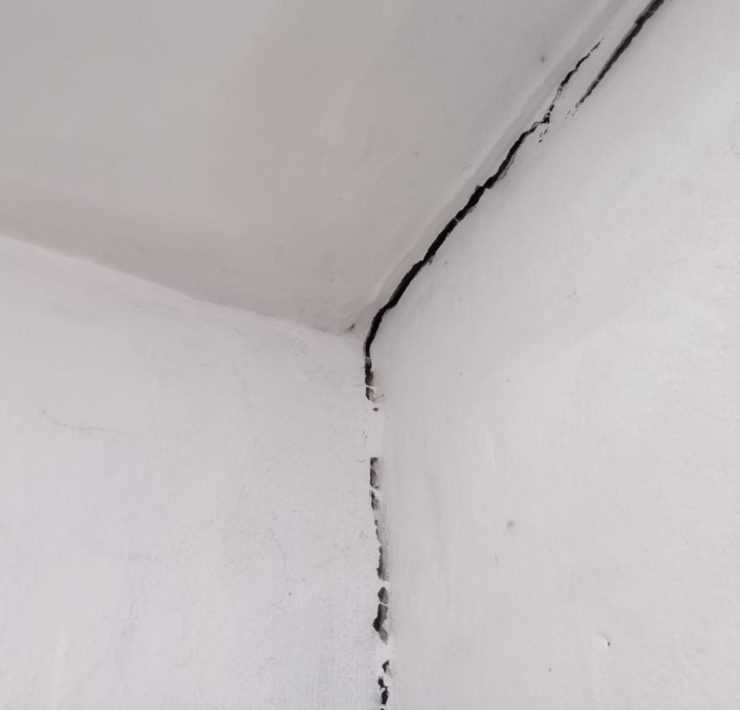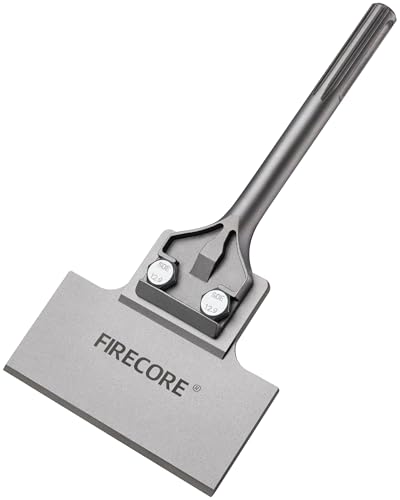




White tack, also known as poster putty or adhesive putty, is a versatile and convenient adhesive that is commonly used to hang lightweight objects on walls. Whether you’re hanging posters, artwork, or decorations, white tack is an easy solution that doesn’t require any nails or tape. However, one concern that many people have is whether white tack leaves marks on walls.
The good news is that when used correctly, white tack should not leave any permanent marks on walls. This is because white tack is designed to be removable and non-damaging to surfaces. It is formulated to adhere to a variety of surfaces without leaving behind any residue or stains. However, there are a few factors to consider to ensure that your walls remain mark-free.
Firstly, it’s important to use the right amount of white tack. Using too much can increase the likelihood of leaving marks on walls. A small, pea-sized amount is usually sufficient to secure lightweight objects. It’s also important to apply the white tack directly to the back of the object, rather than directly onto the wall, to minimize the chances of any marks.
In addition, it’s crucial to apply the white tack correctly and remove it carefully. When applying the white tack, press it firmly onto the back of the object to ensure a strong bond. When removing it, gently pull it off the wall in a slow and steady motion. Avoid ripping or tearing the white tack, as this can increase the chances of leaving a mark on the wall. If any residue does remain, it can usually be easily rubbed off with a soft cloth or erased with an eraser.
In conclusion, white tack is a convenient and versatile adhesive that should not leave any permanent marks on walls when used correctly. By using the right amount, applying it correctly, and removing it carefully, you can enjoy the benefits of white tack without worrying about any damage or residue on your walls.
Does White Tack Leave Marks on Walls?
White tack, also known as poster putty or sticky tack, is a popular adhesive used to hang posters, artwork, and other lightweight objects on walls. One common concern when using white tack is whether or not it leaves marks or residue on walls. In general, white tack is designed to be removable and should not leave marks on most surfaces. However, there are a few factors to consider that may affect whether or not white tack leaves marks on walls.
Type of Surface
The type of surface you are applying the white tack to can influence whether or not it leaves marks. Generally, smooth and non-porous surfaces, such as painted walls or laminated surfaces, are less likely to be marked by white tack. However, rough or textured surfaces, such as brick or wallpaper, may be more prone to marks or residue. It is always a good idea to test a small area before applying white tack to a larger surface to ensure that it does not leave any marks.
Length of Time
The length of time that white tack is left on a wall can also affect whether or not it leaves marks. If white tack is left on a wall for an extended period, it may become more difficult to remove and may leave behind some residue or marks. Therefore, it is recommended to remove white tack within a reasonable timeframe to minimize the risk of leaving marks on the wall.
Proper Application and Removal

Proper application and removal techniques can help reduce the chances of white tack leaving marks on walls. When applying white tack, it is important to knead it until it becomes soft and pliable, and then press it firmly onto the surface. Avoid using excessive amounts of white tack, as this may increase the risk of leaving marks. When removing white tack, gently pull it off the wall in a downward motion, taking care not to apply excessive force. If any residue remains, it can often be easily removed by gently rubbing with a clean cloth or sponge.
Conclusion
In conclusion, white tack is generally designed to be removable and should not leave marks on most surfaces. However, factors such as the type of surface, length of time, and proper application and removal techniques can influence whether or not white tack leaves marks on walls. By following these tips and testing a small area beforehand, you can minimize the risk of leaving marks and enjoy the convenience of using white tack to hang objects on your walls.
Understanding White Tack and its Properties
What is White Tack?
White Tack, also known as poster putty or mounting putty, is a type of adhesive that is commonly used to temporarily affix lightweight objects to various surfaces, including walls. It is a soft and pliable substance that resembles putty or clay.
Properties of White Tack
White Tack possesses several properties that make it a popular choice for hanging lightweight objects on walls:
- Reusability: One of the key characteristics of White Tack is its reusability. Unlike some other adhesives, it can be easily removed from surfaces without leaving behind residue or marks.
- Adhesion: White Tack has a strong adhesive quality that allows it to securely hold lightweight objects, such as posters, decorations, or lightweight frames, on walls.
- Flexibility: Its soft and pliable nature makes White Tack easy to mold into various shapes and sizes, allowing for a customized fit for different objects.
- Non-toxic: White Tack is generally non-toxic and safe to use, making it suitable for a wide range of applications, including classrooms and homes with children.
Precautions and Best Practices

While White Tack is known for its versatility and convenience, there are some precautions and best practices to keep in mind:
- Surface Compatibility: White Tack is typically suitable for use on a variety of surfaces, including painted walls, wallpaper, wood, and glass. However, it is always a good idea to test it on a small area first to ensure compatibility and avoid any potential damage.
- Weight Limitations: It is important to note that White Tack is designed for lightweight objects. Exceeding the weight limit can result in the putty losing its adhesive strength or leaving marks on the wall.
- Application and Removal: To apply White Tack, simply roll a small portion into a ball and press it against the object. When removing, gently peel off the White Tack from the wall to avoid any potential damage. If any residue is left behind, it can usually be easily removed by rolling or dabbing the putty on it.
Understanding the properties of White Tack can help you make informed decisions when using it to hang lightweight objects on walls. By following best practices and taking necessary precautions, you can enjoy its convenience without worrying about damage or marks on your walls.
Common Concerns About White Tack Marks

1. Will white tack leave marks on walls?
One common concern people have when using white tack is whether it will leave marks on walls. White tack is designed to be easily removable, so if used correctly, it should not leave any marks on walls. However, certain factors such as the type of paint or wallpaper on the wall, the amount of pressure applied when removing the white tack, and the length of time it has been left on the wall can all affect whether marks are left behind.
2. How long can white tack be left on walls?

White tack is typically safe to leave on walls for short periods of time, such as a few hours or a day. However, leaving it on for longer periods may increase the likelihood of it leaving marks on the walls. It is always recommended to remove white tack as soon as it is no longer needed to minimize the risk of marks.
3. How can I remove white tack without leaving marks?
To remove white tack without leaving marks on the walls, follow these steps:
- Gently pull the white tack away from the wall in a slow and steady motion.
- If the white tack is not coming off easily, use a bit of heat to soften it. You can do this by gently blowing warm air from a hairdryer on the white tack or using a hot cloth to dab the area around it.
- Once the white tack is softened, try again to pull it away from the wall.
- If any residue remains on the wall, gently rub it with a clean cloth. If necessary, you can use a mild cleaning solution or adhesive remover, making sure to test it on a small, inconspicuous area first to ensure it does not damage the wall.
4. Can white tack be used on all surfaces?
While white tack is generally safe to use on most surfaces, it is important to consider the specific type of surface before using it. Avoid using white tack on delicate or porous surfaces that may be easily damaged or stained. It is recommended to test a small, inconspicuous area first to ensure that the white tack will not cause any damage.
5. What should I do if white tack does leave marks on my walls?
If white tack does leave marks on your walls, there are a few options you can try:
- Gently rub the mark with an eraser or a clean cloth. This may remove the mark, especially if it is fresh.
- If the mark persists, you can try using a mild cleaning solution or adhesive remover specifically designed for the type of wall surface you have. Test it on a small, inconspicuous area first to ensure it does not cause further damage.
- If all else fails, you may need to touch up the affected area with paint or wallpaper to completely remove the marks.
Expert Tips to Prevent White Tack Marks
White tack is a popular adhesive that is commonly used to hang posters, pictures, and other lightweight items on walls. While it is generally easy to use and remove, it can sometimes leave marks or stains on walls if not used properly. Here are some expert tips to prevent white tack marks:
1. Test the White Tack on a Small, Inconspicuous Area
Before using white tack on a visible area of your wall, it is a good idea to test it on a small, inconspicuous area first. Apply a small amount of white tack and leave it for a day or two to see if it leaves any marks or damage. If there are no visible marks or damage, you can proceed to use it on the desired area.
2. Clean the Surface Before Applying White Tack
Make sure the surface of the wall is clean and free from dust, dirt, or any other debris before applying white tack. Use a damp cloth or sponge to wipe the wall and let it dry completely before sticking the white tack. This will ensure better adhesion and reduce the chances of marks or stains.
3. Use the Right Amount of White Tack
Using too much white tack can increase the chances of it leaving marks on the wall. Use only the amount necessary to secure the item you are hanging. Press the white tack firmly onto the wall, but avoid overdoing it. If you are unsure about the amount to use, start with a small amount and add more if needed.
4. Avoid Using White Tack on Delicate or Fragile Surfaces
White tack is not suitable for all surfaces. Avoid using it on delicate or fragile surfaces such as wallpaper, painted surfaces, or surfaces with a textured finish. If you are unsure about the compatibility of white tack with a particular surface, it is best to consult the manufacturer or seek professional advice.
5. Remove White Tack Carefully

When removing white tack from the wall, do so carefully to minimize the chances of leaving marks or damage. Start by gently pulling the white tack away from the wall and avoid forcefully ripping or tearing it off. If there are any residues left on the wall, use a gentle adhesive remover or rubbing alcohol to remove them.
By following these expert tips, you can prevent white tack marks and keep your walls clean and undamaged. Remember to always use white tack responsibly and in accordance with the manufacturer’s instructions.
How to Remove White Tack Marks from Walls
If you’ve used white tack to hang posters or decorations on your walls, you may be left with unsightly marks once you’ve removed them. While white tack is generally a low-residue adhesive, it can still leave faint marks or even discoloration on your walls.
1. Gently Remove the White Tack
Before attempting to remove the marks, it’s important to gently remove any remaining white tack from the wall. Do this by carefully peeling it off using your fingers or a plastic scraper. Avoid using sharp objects that may damage the wall surface.
2. Test a Small Area
Since different wall surfaces may react differently to cleaning solutions, it’s always best to start by testing a small, inconspicuous area of the wall. This will help ensure that the cleaning method you choose doesn’t cause any additional damage to your walls.
3. Use a Mild Cleaning Solution
For most wall surfaces, a mild cleaning solution should be sufficient to remove white tack marks. Mix a few drops of dish soap with warm water to create a gentle cleaning solution. Dampen a clean cloth in the solution and gently rub the marks in a circular motion. Rinse the cloth frequently and repeat until the marks are no longer visible.
4. Try Isopropyl Alcohol
If the mild cleaning solution doesn’t work, you can try using isopropyl alcohol. Dampen a clean cloth with the alcohol and gently rub the marks in a circular motion. Again, rinse the cloth frequently and repeat until the marks are gone. Be sure to test a small area of the wall first, as alcohol may cause damage or discoloration on certain surfaces.
5. Paint Over the Marks

If the white tack marks are stubborn and refuse to come off, another option is to paint over them. Match the paint color as closely as possible, then gently apply a small amount of the paint to the marks using a small brush. Allow the paint to dry completely before assessing the results. In some cases, a second coat may be necessary.
Remember, prevention is better than cure. To avoid white tack marks altogether, use alternative methods of hanging that won’t damage your walls, such as picture hooks or removable adhesive strips.
| Steps to Remove White Tack Marks |
|---|
| 1. Gently remove the white tack |
| 2. Test a small area |
| 3. Use a mild cleaning solution |
| 4. Try isopropyl alcohol |
| 5. Paint over the marks |
Alternative Hanging Solutions to White Tack
1. Command Strips
Command strips are a reliable and convenient alternative to white tack. They are adhesive strips that can be easily stuck to the wall and provide a strong hold. Additionally, they can be removed without leaving any marks or residue on the wall. Command strips are available in various sizes and can support different weights, making them suitable for hanging a variety of items.
2. Picture Hanging Hooks
Picture hanging hooks are another great alternative to white tack. They come in different sizes and styles, allowing you to choose the most appropriate one for your needs. These hooks are attached to the wall with screws or nails and provide a secure and stable hold for hanging pictures, frames, and other lightweight items. They can be easily removed without damaging the wall, and some models even feature adjustable hooks for easy repositioning.
3. Adhesive Poster Strips
Adhesive poster strips are specially designed for hanging posters and lightweight items. These strips are typically double-sided and have an adhesive on both ends. They can be easily attached to the back of the item and pressed onto the wall. Adhesive poster strips are easy to remove and usually leave no marks or residue. They are suitable for temporarily hanging items and can be a good alternative to white tack for quick and easy display.
4. Removable Adhesive Hooks
Removable adhesive hooks are another popular alternative to white tack. These hooks are self-adhesive and can be easily stuck to the wall. They come in various sizes and designs, allowing you to choose the most suitable one for your hanging needs. Removable adhesive hooks can support different weights and are commonly used for hanging towels, keys, and lightweight decorations. They can be easily removed without causing any damage or leaving marks on the wall.
5. Washi Tape
Washi tape is a decorative adhesive tape that can be used for hanging lightweight items. While it may not be as strong as other alternatives, it can add a colorful and creative touch to your displays. Washi tape comes in a variety of patterns and designs, allowing you to customize your hanging solution. It can be easily torn and removed without leaving any residue or marks on the wall. Keep in mind that washi tape is not suitable for heavy or valuable items, as it may not provide a strong enough hold.
Conclusion
When it comes to hanging items without using white tack, there are several alternative solutions available. Command strips, picture hanging hooks, adhesive poster strips, removable adhesive hooks, and washi tape are just a few examples of the options you can consider. These alternatives provide a secure hold and can be easily removed without leaving marks or damaging the walls. Choose the option that best suits your needs and enjoy hassle-free hanging!
FAQ
Does White Tack leave marks on walls?
White Tack can leave marks on walls if it is left on for an extended period of time or if it is pressed too firmly onto the wall. To prevent this, it is important to remove the White Tack carefully and gently.
How do I remove White Tack from walls without leaving marks?
To remove White Tack from walls without leaving marks, you can gently roll the White Tack away from the surface using your fingers. If there are any remaining marks, you can try using an eraser or a mild cleaning solution to remove them.
How long can I leave White Tack on walls without it leaving marks?
The length of time that White Tack can be left on walls without leaving marks can vary depending on factors such as the type of wall surface and the humidity of the room. It is generally recommended to remove the White Tack within a few days to a week to prevent any potential marks.
Can I use White Tack on all types of walls?
White Tack can be used on most types of walls, including painted walls, wallpapered walls, and even wood surfaces. However, it is always a good idea to test a small area first to ensure that it does not cause any damage or leave marks.
Are there any alternatives to White Tack that do not leave marks on walls?
Yes, there are several alternatives to White Tack that do not leave marks on walls. Some popular options include adhesive hooks, removable adhesive strips, and mounting putty. These alternatives can provide a secure hold without damaging the walls.
What should I do if White Tack leaves marks on my walls?
If White Tack leaves marks on your walls, you can try using an eraser or a mild cleaning solution to gently remove the marks. If the marks are stubborn, you may need to repaint or touch up the affected area to fully remove them.
Is it safe to use White Tack on delicate surfaces?
White Tack can be used on delicate surfaces, but it is important to exercise caution. If the delicate surface is easily damaged or has a sensitive finish, it is best to test a small, inconspicuous area first to ensure that the White Tack will not cause any damage or leave marks.















